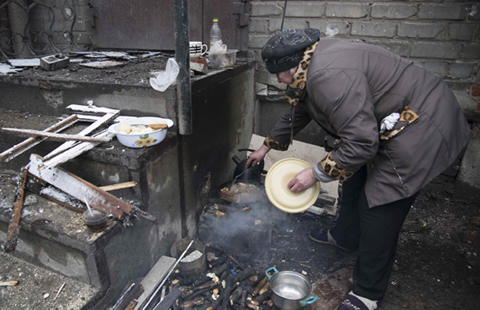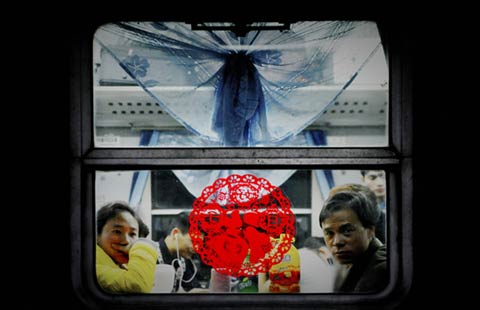
Chinese company starts work on region's first standard-gauge track, leading the way in connecting African railroads
Work has finally begun in Mombasa, Kenya, on building the first standard-gauge railway line in East Africa, a milestone in linking African railways.
Building such a line has long remained nothing but a tantalizing dream, in part because lines in different areas have different gauges, depending on the standards of former colonial powers and railway builders and local terrain.
|
Workers inspect the Mombasa-Nairobi section of the railway. Provided to China Daily |
The East Africa Railway Master Plan would connect all countries in the East African Community - Kenya, Tanzania, Uganda, Rwanda and Burundi - using one standard. A branch line also is projected to go to South Sudan.
The plan was established by infrastructure ministers from five countries with the help of the infrastructure development firm CPCS, which traces its roots to the Canadian Pacific Railroad in the late 1800s.
The firm has done many projects in different fields, and won a World Bank President's Award of Excellence for its work with African railways.
While some significant delays have resulted from issues surrounding the taking of land for the tracks, the Master Plan foresees major benefits for the region from the project.
The plan forecasts annual growth of 6.7 percent in freight traffic on the existing lines once they have been upgraded, which would total 16 million tons of freight moved yearly by 2030, compared with 3.7 million tons now. The existing lines are the Rift Valley Railways (Kenya), Tazara (Tanzania, Zambia) and Tanzania Railways Ltd.
The plan notes higher traffic-carrying capacity, better availability, lower capital expenditure for equipment and a modest potential for operating cost savings. The plan, however, does not recommend conversion of existing lines to electric traction.
"This would generate savings in operating costs, but given the investment requirements, would likely produce a financial rate of return of approximately 2 percent," the plan says. "As such, the conversion to electric traction is not recommended for the foreseeable future."
The different gauges in use have been a headache for those who have dreamed of connecting the railways of the continent - or even those of regions. The Cape gauge, 1,067millimeters wide, is used in South Africa and many other countries, including Tanzania, Zambia, Mozambique, South Sudan and Sudan.
The meter gauge is used in northern Tanzania, Kenya, Uganda, and Ethiopia. Narrow gauge, 950 mm, is found in Eritrea and some parts of Ethiopia.
The standard gauge railway line, which will have standardized tracks of 1,435 mm, would connect all five of the East African countries.
The $3.6 billion, first phase of the standard-gauge railway project, which is 90 percent funded by the Export-Import Bank of China, will link the port city of Mombasa with the capital, Nairobi, 472 kilometers away. The project is being undertaken by Chinese infrastructure conglomerate China Road and Bridge Corporation, which has in the past undertaken several projects in Kenya, encompassing roads, an airport and a port.

The line is expected to then proceed to Uganda, Rwanda and Burundi, with branch lines to Tanzania and South Sudan. The total cost of the whole project is estimated at $8.1 billion.
The Kenyan government has, however, faced a lot of resistance in resettling residents who live along the proposed line.
Land issues are a big setback for the huge project, according to Li Juguang, manager of the external relations and cooperation department for the project.
"The main challenge of the project is land delivery. The land parcels formally handed over to us to date are only 142 km, while the entire SGR corridor is 472 km long," Li says. "It is far behind the construction requirement, and this has led to our personnel on the ground being idle. A total of 2,239 pieces of equipment and machinery are also lying idle on site."
Only 30 teams of a total of 87 have been working because of the land delivery constraint. Li also says the construction schedule may be greatly affected if land is not delivered in time, given that half of the earthworks and half of land reclamation work at the Port of Mombasa are scheduled to be completed this year.
The High Court sitting in Machakos County, Kenya, temporarily halted construction of the railway in October. Kibwezi West Member of Parliament Patrick Musimba had sued the National Land Commission, Kenya Railways and the Attorney General's Office. CRBC was also mentioned as an interested party in the case. The stop-work order was lifted but the court directed that a bench be constituted to hear the MP's case, saying that he had raised "weighty issues".
In December, Chief Justice Willy Mutunga constituted a five-judge bench to hear the MP's petition against the compulsorily acquired land.
Compensation has been a major thorn in the side of both the contractor and government, with landowners claiming the government took land from them without proper payment.
The landowners also claim they were not given enough time to vacate the land before construction work began.
Officials say, however, that the construction also will have local benefits in terms of jobs and materials used.
As for construction materials, Li says, well more than 90 percent are locally sourced.
"Except for railway track and locomotives, materials such as cement, steel, fuel, ballast, hardware and timber, to name a few, are sourced locally. We will not import materials from international markets unless local manufacturers are not producing them or the local materials do not meet the criteria of the standards and specifications," he says.
President Uhuru Kenyatta directed on Jan 23 that half of the 30,000 jobs that will be created by the project be given to locals living along the proposed line.
Kenyatta said he had discussed the idea with the Chinese government, which agreed that all jobs created by the project that do not need foreign expertise be given to Kenyans.
Li, however, said the president's call was already being implemented, with well more than 7,000 Kenyans hired for the project by CRBC.
"As of Jan 10, there were 800 Chinese managerial and technical personnel and 7,963 Kenyan employees at the head office, branch offices and site offices."
Kenyatta said that once the line is complete, the economy of the country will get a significant shot in the arm.
He made the comment during an inspection tour of the project at a test section of the railway in Mtito Andei, Makueni County on Jan 23. He was accompanied by a host of senior government officials including Transport and Infrastructure Cabinet Secretary Michael Kamau, and Cabinet Secretary for Energy and Petroleum Davis Chirchir, as well as a team of other government officials and senior Chinese officials from CRBC and the Chinese embassy in Nairobi.
Li said Kenyatta inspected a test section and that it proved to be very successful. Such sections often are built in areas anticipated to be problematic. He said CRBC will start laying a trial line, which will connect test sections, before the full scale track-laying in 2016.
The project has three branch offices in Mombasa, Mtito Andei and Nairobi, with 18 other site offices along the route of the railway.
For China Daily
(China Daily Africa Weekly 02/06/2015 page20)








